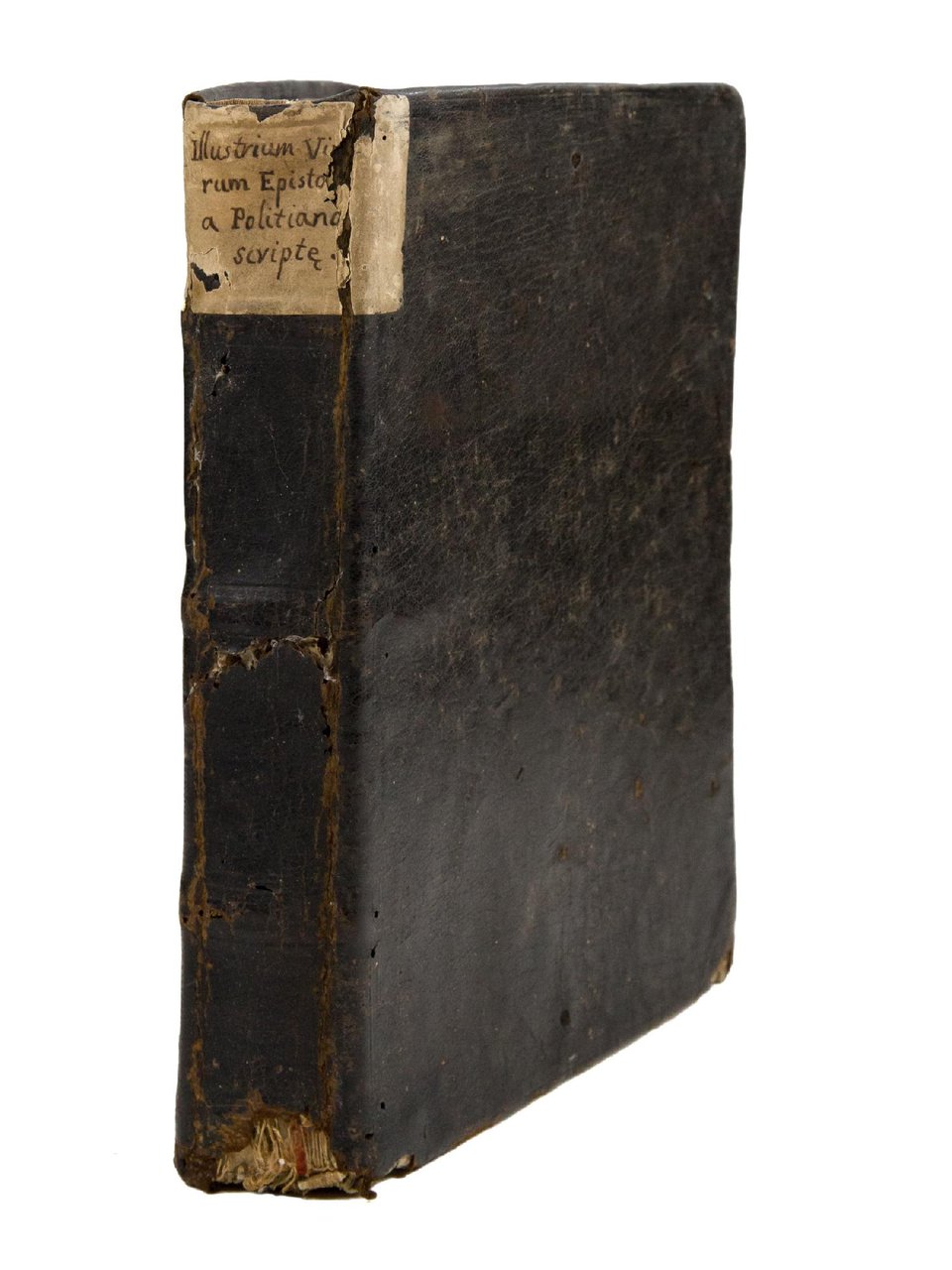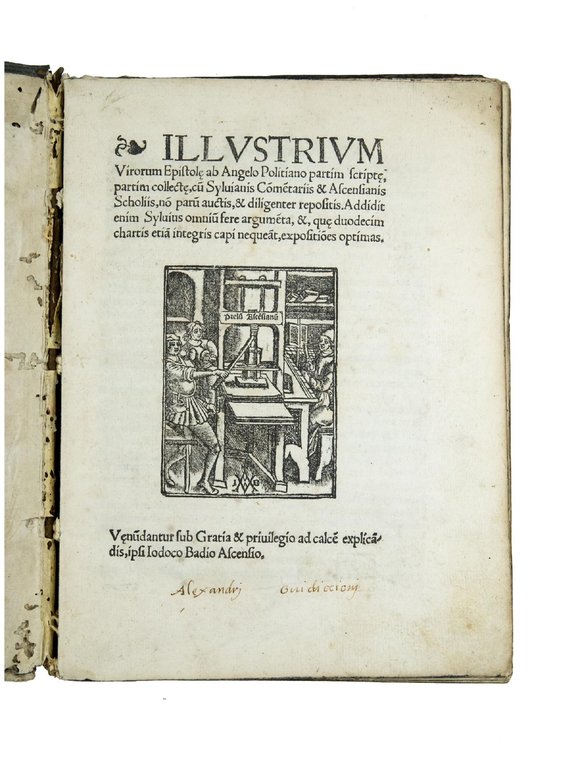

Libros antiguos y modernos
POLIZIANO, Angelo (1454-1494)
Illustrium Virorum Epistolae ab Angelo Politiano partim scriptae, partim collectae, cum Sylvianis Commentariis & Ascensianis Scholiis, non parum auctis, & diligenter repositis. Addidit enim Sylvius omnium fere argumenta, & quae duodecim chartis etiam integris capi nequeant, expositiones optimas
Josse Bade, 1520
1900,00 €
Govi Libreria Antiquaria
(Modena, Italia)
Los gastos de envío correctos se calculan una vez añadida la dirección de envío durante la creación del pedido. El vendedor puede elegir uno o varios métodos de envío: standard, express, economy o in store pick-up.
Condiciones de envío de la Librería:
Para los productos con un precio superior a 300 euros, es posible solicitar un plan de pago a plazos al Maremagnum. El pago puede efectuarse con Carta del Docente, Carta della cultura giovani e del merito, Administración Pública.
Los plazos de entrega se estiman en función de los plazos de envío de la librería y del transportista. En caso de retención aduanera, pueden producirse retrasos en la entrega. Los posibles gastos de aduana corren a cargo del destinatario.
Pulsa para saber másFormas de Pago
- PayPal
- Tarjeta de crédito
- Transferencia Bancaria
-
-
Descubre cómo utilizar
tu Carta del Docente -
Descubre cómo utilizar
tu Carta della cultura giovani e del merito
Detalles
Descripción
Guedet, p. 644; Martín Baños, p. 669; Ph. Renouard, Bibliographie des impressions et des oeuvres de Josse Bade, (Paris, 1908), I, p. 184, no. 5.
SECOND EDITION with the commentary by François Dubois but first to contain a new dedication letter by him to pope Leo X, dated from Paris, Collège de Boncourt, May 18, 1520. When in July 1498 the Venetian press of Aldo Manuzio produced an edition of Poliziano's collected Latin and Greek works, also 251 letters, divided in twelve books, were included (mostly by Poliziano himself, but also some addressed to him and some exchanged between his correspondents). Poliziano certainly had hand in preparing his works for print before his death, but Alessandro Sarti, a friend, and Pietro Crinito, a pupil, did the actual editing. These letters alone were re-published under the title Illustrium virorum epistolae at Lyon in 1499 by Josse Bade, and again in Paris in 1510 and 1515, in Antwerp in 1510, and in Strasbourg in 1513. In 1517 Bade published a new edition with the commentary by François Dubois.
“By 1517 Poliziano's collection had demonstrably acquired the status of a textbook. In that year, Josse Bade, from his Paris press, started a profitable run of printings of the letters, edited with extensive commentary by François Du Bois, Du Bois had published the first two centuries of his Progymnasmata in the previous year. His annotations to Poliziano's Illustrium virorum epistolae must therefore have emerged from the same environment at the Collège de Montaigu, although we know that he was at the Collège de Lisieux by the end of 1517 (at the Collège de Boncourt between 1520 and 1526, and at the Collège de Tournai subsequently). The commentaries appended to each of the letters (and supplemented by a few extra notes by Josse Bade) tell where Du Bois focused his students' attention [...] Du Bois' attitude to the Latin language question is implicit and subtends his annotation. His commentary is an example of the grammatical exercise enarratio, exactly the same kind of commentary that humanists appended to their editions of Latin authors. Such commentaries were in effect classroom lecture notes. They were generally tidied up and expanded for publication, but they certainly reproduced the instruction that was given and the manner in which it was transmitted orally, point by separate point, following the order of the text studied, and by no means necessarily pausing to reflect on the thrust of the work taken as a whole (that was the matter for an introductory general lecture, a praelectio, if there was one). Once problems of verbal and syntactic comprehensions had been covered (lectio), the purpose of enarratio was to explain people and places, to fill out passing allusions by extensive quotation from apposite classical texts, in short to contextualize the work studied within the ancient culture from which it drew its language, its frame of reference, and its intellectual concepts” (A. Moss, Renaissance Truth and the Latin Language Turn, Oxford, 2003, pp. 74-75; see also A. Campana, Per il carteggio del Poliziano, in: “La Rinascita”, 6, 1943, pp. 437-472; M. Martelli, Il ‘libro delle Epistolae' di Angelo Poliziano, in: “Interpres”, 1, 1978, pp. 184-255; and F. La Brasca, La correspondence d'Ange Politien (1454-1494). La lettre (en)volée ou comment on fabrique un recueil épistolaire, in: “Epistulae antiquae. Actes du premier colloque: Le genre épistolaire antique et ses prolongements, Tours, 1998”, L. Nadjo & E. Gavoille, eds., Louvain, 2002, II, pp. 387-406).
Collections of Poliziano's letters were reprinted again and again until the middle of the 17th century, alone or with letters by some of his fellow humanist

